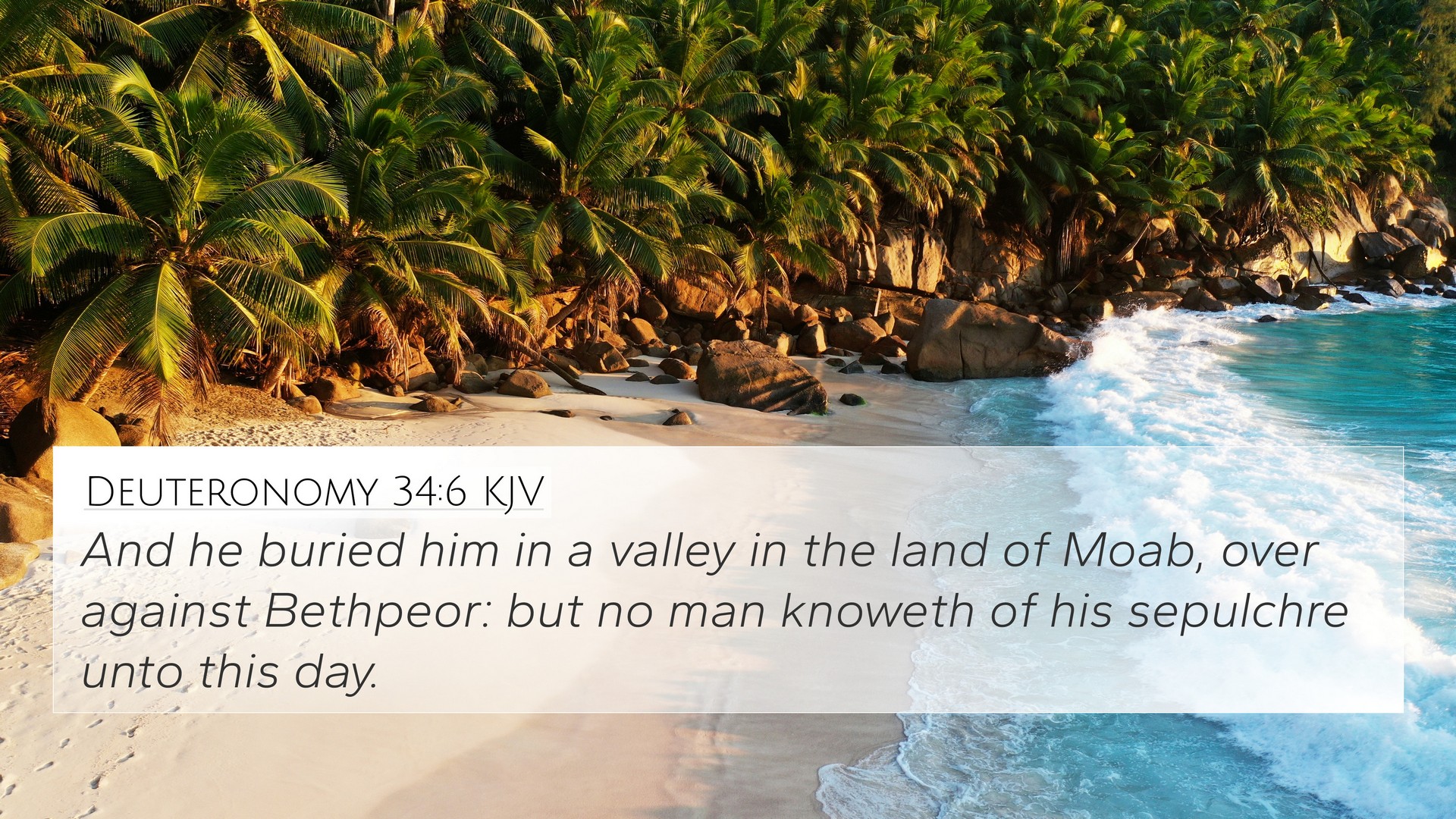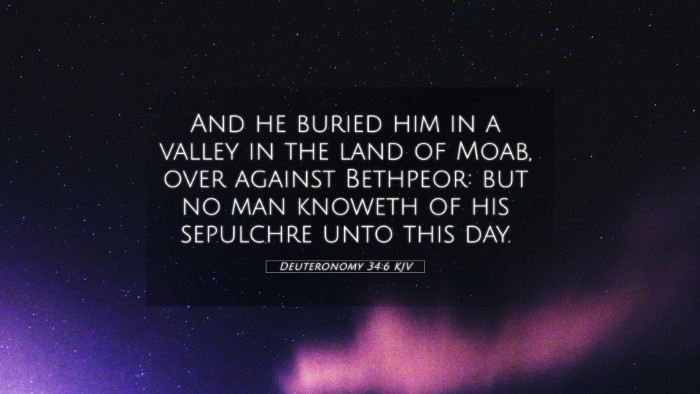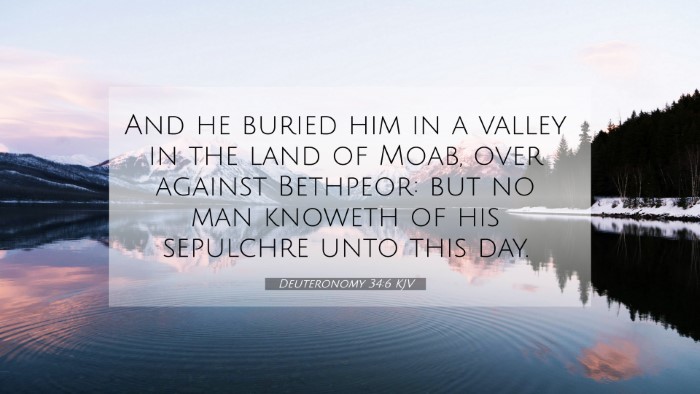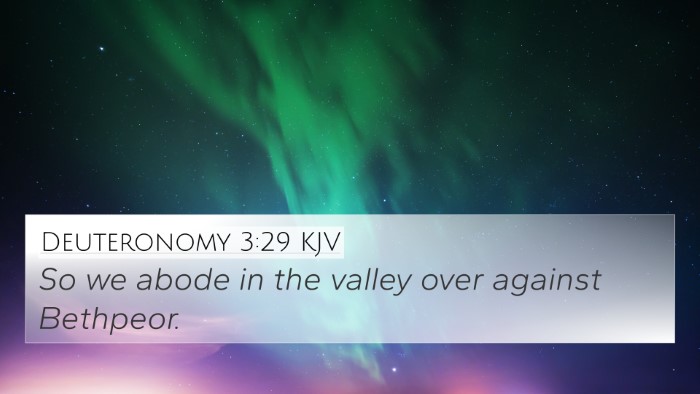Understanding Deuteronomy 34:6
Verse Text: "And he buried him in a valley in the land of Moab, over against Bethpeor: but no man knoweth of his sepulchre unto this day." (Deuteronomy 34:6)
Summary of Meaning
Deuteronomy 34:6 serves as the concluding verse of the Torah and the life of Moses. It highlights two key elements:
- The burial of Moses, showcasing his unique relationship with God and the significance of his leadership.
- The mystery surrounding his burial place, emphasizing God's protection of Moses even after his death.
Insights from Public Domain Commentaries
Various commentaries provide a richer understanding of this verse:
Matthew Henry
Matthew Henry emphasizes the profound respect and honor given to Moses in his burial. He notes that God Himself buried Moses, which illustrates the importance of Moses' role as a prophet. The mystery of his grave serves to prevent idolization and highlights God's sovereignty over life and death.
Albert Barnes
Albert Barnes elaborates on the significance of Moab as the burial location, suggesting it symbolizes both the end of Moses’ earthly pilgrimage and the transition of leadership to Joshua. Barnes also connects this event to the themes of obedience and faithfulness—Moses obeyed God until the end, and his burial reflects God's faithfulness to His promises.
Adam Clarke
Adam Clarke provides an insightful analysis of the phrase "no man knoweth of his sepulchre unto this day." He speculates on the reasons behind God concealing Moses' burial site, asserting that this was intended to prevent future generations from creating a shrine or place of worship at the grave, thus ensuring a focus on God rather than man.
Connections and Cross-References
This verse connects to several other Scriptures, enriching our understanding through thematic Bible verse connections:
- Numbers 20:12 - God's decree regarding Moses' inability to enter the Promised Land.
- Deuteronomy 31:6 - The call to be strong and courageous in the face of leadership transition.
- Joshua 1:1 - The commissioning of Joshua after Moses' death.
- Hebrews 11:23-29 - Reflects on faith in relation to Moses' life and actions.
- Malachi 4:4-6 - The prophecy of Moses' return along with Elijah in the end times.
- Luke 9:30-31 - The appearance of Moses during the Transfiguration of Christ.
- Matthew 17:3 - The significance of Moses in the New Testament as a lawgiver.
Thematic Analysis
The elements of this verse relate to several important themes throughout the Bible:
- Leadership Transition: Moses' death signifies a pivotal shift in leadership to Joshua, a theme echoed throughout Scripture when God appoints new leaders.
- God's Sovereignty: The act of God Himself burying Moses showcases divine providence and care even after death.
- Faithfulness: The emphasis on the mystery of Moses' grave also ties into themes of continuing faithfulness to God's promises.
Practical Application
This verse encourages readers to reflect on God's provision in their lives, considering how God leads and protects us in every stage of our journey. It also invites meditation on the themes of leadership, respect for God's authority, and the necessity of focusing on God rather than earthly figures.
Conclusion
Deuteronomy 34:6 encapsulates significant theological truths about God's plan and Moses' legacy. Through careful scriptural cross-referencing, we can gain a deeper understanding of the connections between Bible verses that illuminate spiritual truths and enhance our study of the Word.
Related Bible Studies and Resources
For further exploration of cross-references, consider using:
- Tools for Bible cross-referencing
- Bible concordance for thematic analysis
- Cross-reference Bible study methods to deepen your understanding
- Comprehensive Bible cross-reference materials for sermon preparation and personal development




